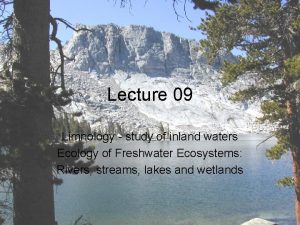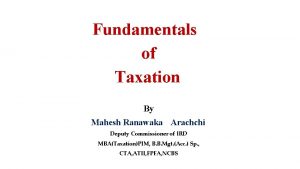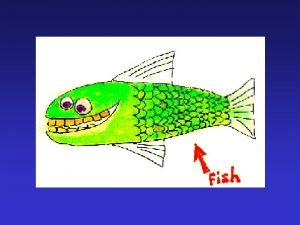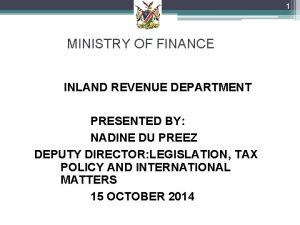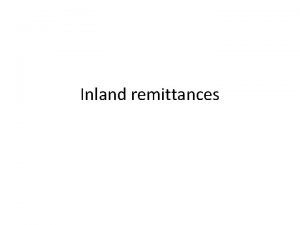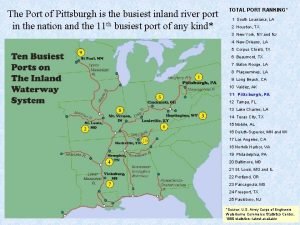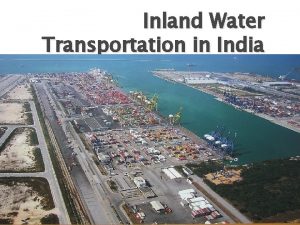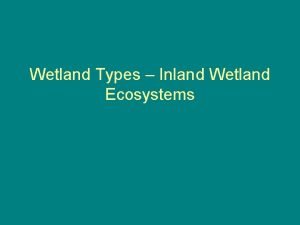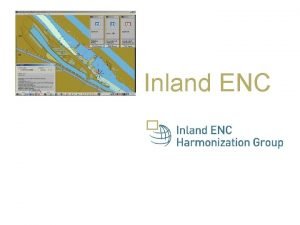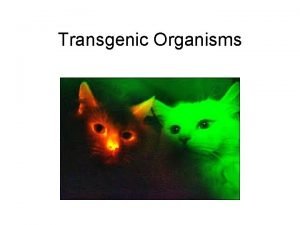Planktonic organisms in Inland Water Planktonic organisms The










- Slides: 10

Planktonic organisms in Inland Water

Planktonic organisms • The term plankton was first proposed by an Oceanographer, Victor Hensen in 1887 to designate that the heterogeneous assemblage of minute organism and finely divided, non-living materials which are known to occur in the waters and to float at the will of the waves and other water movements.

Classifications • Plankton of the various freshwaters differs widely in quality. The following outline is an abbreviated indication of the organism which may occur in the plankton of fresh water. • 1. Plants : • a) Algae are represented in the plankton of inland waters • b) Fungi, which occur as bacteria abundantly in the plankton, in fact it is likely that no water in nature is free from them.

• 2. Animals : • a) Protozoa – These are the representative of the plankton by many genera and species • b) Coelenterate - Mainly hydra is facultative plankter occurring at times free in open water • c) Rotatoria is the most important groups of zooplankton • d) Gastrotricha - occur in limited numbers • e) Bryozoa whose larvae are free swimming • f) Arthropoda – Mainly i) Crustacea and ii) Insects

• 3. Occasional plankters : • a) Flowering plants for eg. Wolffia (Lemnaceae) occur at various depth and are recorded as plankton organisms especially in rivers. • b) Platyhelminthes eg, Turbellaria are of less importance in freshwaters. • c) Coelentrata eg, Medusa (Craspedacusta) • d) Insecta eg, May-fly nymphs • e) Arachnida eg, Water mites • f) Vertebrata eg, Juvenile stages of fishes

Classification and Terminology of Plankton Some of the important groups of plankton are : 1. Classification based on Quality A. Phytoplankton – plant plankton a. Phytoplankton proper – chlorophyll bearing plankton • b. Saproplankton – bacteria and fungi • B. Zooplankton – animal plankton • •

• 2. On the basis of Size: • A. Meroplankton – the large units of plankton, visible to the unaided eye • B. Net plankton (Mesoplankton) – plankton secured by the plankton net equipped with No. 25 silk bolting cloth (mesh 0. 03 to 0. 04 mm) • C. Nanoplankton (Microplankton) – very minute plankton not secured by the plankton net with No 25 bolting cloth • a) Ultra plankton : <5 µm (<0. 005 mm) • b) Nano plankton : 5 -60 µm (0. 005 – 0. 06 mm) (Dwarf / runts) • c) Microplankton : 60 -500 µm (0. 06 -0. 5 mm) (Net plankton) • d) Meso plankton : 500 -1000 µm (0. 5 -1. 0 mm) • e) Macroplankton : 1. 0 mm – 1. 0 cm • f) Megaloplankton : > 1. 0 cm

• 3. On the basis of local environmental distribution: • A. Limnoplankton : lake plankton • B. Rheoplankton (Potamoplankton) : running water plankton • C. Heleoplankton : pond plankton • D. Haliplankton : salt water plankton • E. Hypalmyroplankton : brackish water plankton

• 4. Based on Origin • A. Autogenic plankton : plankton produced locally • B. Allogenic plankton : plankton introduced from other localities • 5. On the basis of content • A. Euplankton / True plankton • B. Pseudoplankton (Flase plankton) : debris mingled in plankton

• 6. Based on the life history / plank tonic life (Length of time): • A. Holoplankton / Permanent plankton : organisms free floating throughout their life • B. Meroplankton / Temperory plankton : organisms free floating only at certain times or stages of life cycle • 7. Based on habitat in water body • A. Hypoplankton : Benthic • B. Epiplankton : Surface • C. Bathyplankton : Aphotic zone • D. Mesoplankton : Disphotic/lighted zone
 Water and water and water water
Water and water and water water Study of inland water
Study of inland water Bangladesh is blessed with huge inland open water resources
Bangladesh is blessed with huge inland open water resources Unicellular and multi cellular
Unicellular and multi cellular Competitive interaction
Competitive interaction Principles of taxation
Principles of taxation 2013 apes frq
2013 apes frq Ministry of finance inland revenue
Ministry of finance inland revenue Inland transfer
Inland transfer Inland transport committee
Inland transport committee Busiest inland river port in us
Busiest inland river port in us

